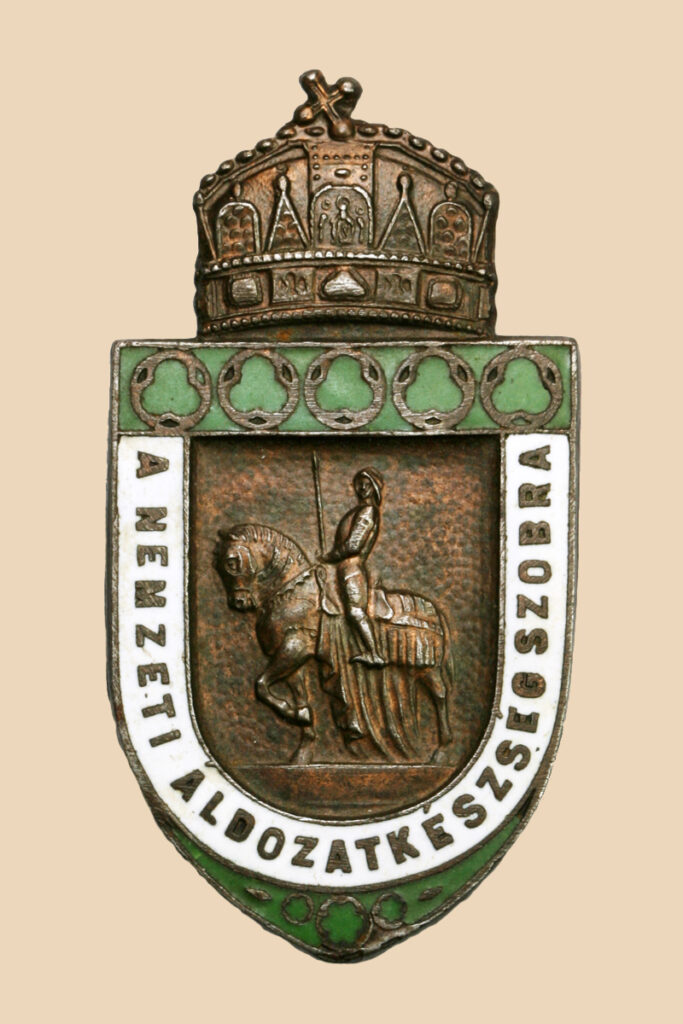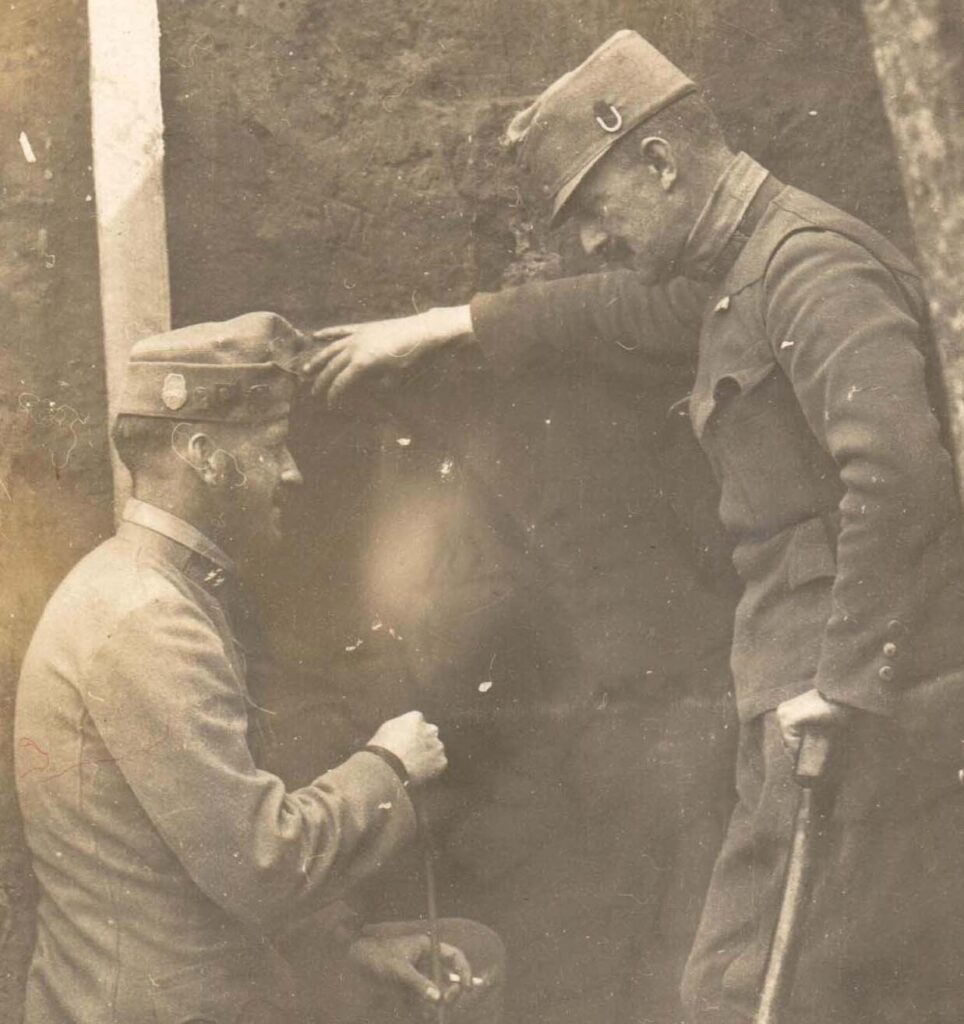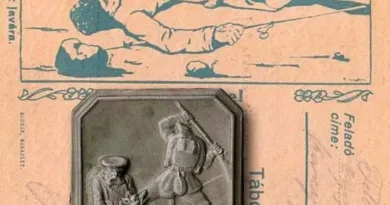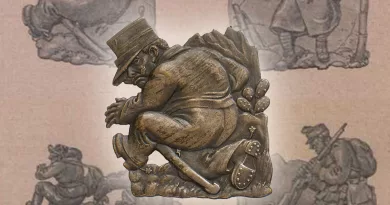Statue of National Sacrifice
The statue was ordered in the spring of 1915 by the Augusta Fund and the Military Aid Office to raise donations. The work was entrusted to Ferenc Sidlo, a well-known sculptor of the time. He also designed several cap badges, such as the dragon badge of the 4th Honvéd infantry regiment (I will present this in another post). It was inaugurated on September 12, 1915 on Deák Square in Budapest.

At this time, wooden statues were erected in many settlements of the Monarchy, modeled on the Viennese statue “Wehrmann in Eisen”. Iron nails purchased in exchange for donations could be drilled into these. The wooden sculptures thus became an iron sculpture. I have previously written about the “Iron Székely” set up in Székelyudvarhely. This statue was similar, and it was the first such statue in Hungary. The donation was evidenced not only by the placement of iron plates (many engraved their names on the pin), but also by a commemorative card about the donation. It was also possible to buy a beautiful enamel badge depicting the statue.

The badge was made in both green and blue enamel, with blue being rarer. In addition to the larger badge with a needle, smaller buttonhole badges were also sold. The collection was complemented by a postcard, envelope and stationery decorated with the image of the badge. The price of the larger badge was two crowns.






[…] The nails could be obtained for a donation. I have already written about the monuments in Budapest and Székelyudvarhely in previous posts. In this post, I discuss the iron turul of the city of […]